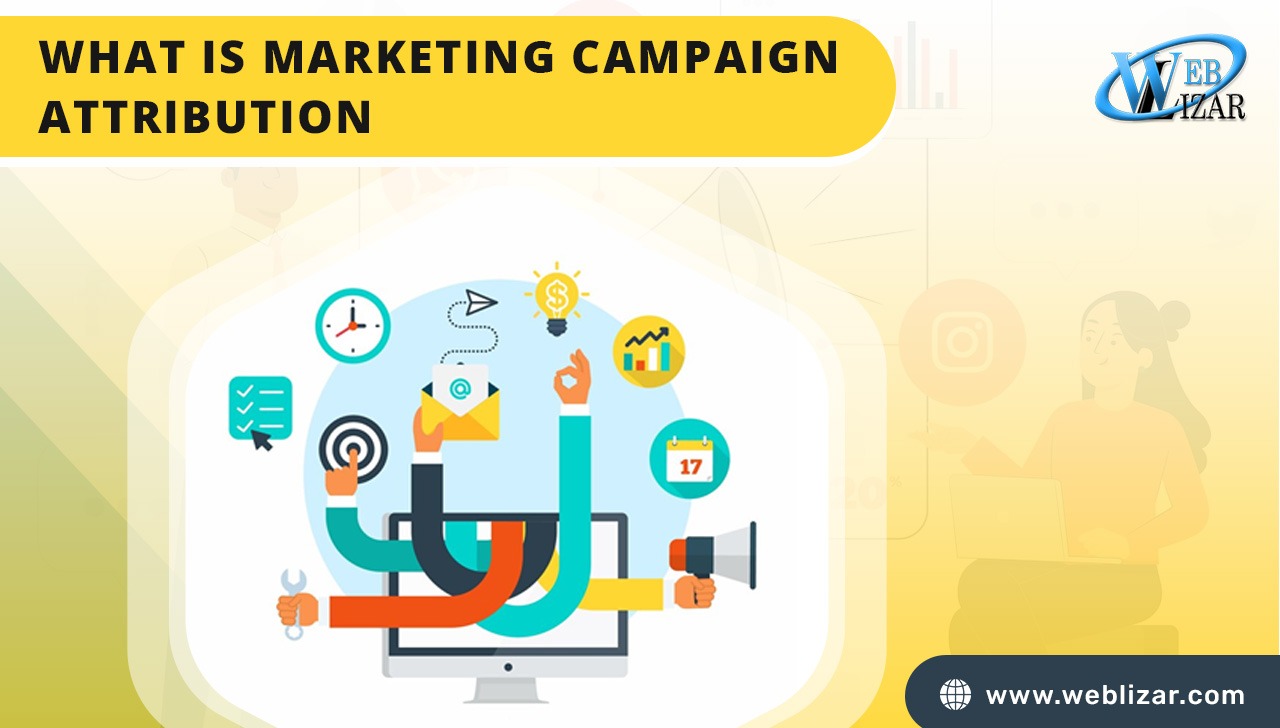What is Marketing Campaign Attribution: Complete Guide

- Benifits of Marketing Attribution , First-Touch Attribution , Last-Touch Attribution: , Linear Attribution Model , Marketing Attribution , Marketing Attribution Models , Marketing Campaign Attribution , Time Decay Attribution , U-shaped Attribution Model
- Benifits of Marketing Attribution, First-Touch Attribution, Last-Touch Attribution, Linear Attribution Model, Marketing Attribution, Marketing Attribution Models, Marketing Campaign Attribution, Time Decay Attribution
What is Marketing Campaign Attribution: To attract customers’ attention and loyalty in today’s highly mobile and competitive marketplace, marketing professionals need to carry out their campaigns using multiple channels.
Although this strategy is quite effective in customizing the customer journey and increasing customer engagements, leads, and sales, it’s often difficult to determine the impact of a particular campaign on marketing return on investment or ROI.
To make the right campaign optimization, marketers need to use campaign attribution to determine how a particular touchpoint or a combination of touchpoints influences a customer’s decision.
What Is Marketing Campaign Attribution?
What Is Marketing Campaign Attribution, Simply put, marketing campaign attribution is the practice of identifying and assigning the right value to the touchpoints a consumer encounters on their path to becoming a customer.
The path to getting customers is becoming more complex in today’s digitized marketplace, with a web of interactions occurring across different channels before conversion. It’s increasingly important for marketers to understand which channel has the greatest influence on the customer’s decision to purchase or take the desired step.
For instance, if you sell baby clothes, you can promote your brand by using different platforms like Google display ads, Facebook, and other social media apps. Over time, you may discover that your customer conversion rate is increasing, and you’re getting more revenue, meaning your campaign is working.
Still, it’s hard to pinpoint which channel to focus more money and time on; it’s hard to decide if Facebook has more influence on your customer’s decision to purchase or if the credit should be given to Google ads.
Marketing attribution answers these questions. It provides the marketer with relevant information about how, where, and when the consumer interacts with the marketing message, making it easier for campaigns to be structured to meet consumers’ desires.
Also Read: How To Use Social Media For Sports Marketing Campaigns
Benefits Of Marketing Attribution
There’s a story behind every sale. For marketers to succeed in their campaigns, it’s essential to understand this story. Thus, they need to aggregate data from different channels to properly weigh each interaction the consumer had with the brand.
This strategy will help determine which channel played a more significant role in convincing the consumer to purchase so that the brand could focus more time and resources on its most effective channel. What is a Marketing Campaign Attribution
Some benefits of marketing attribution include:
• Helps In Budget Optimization: Marketing attribution takes out any guesswork in budget allocation by revealing the channels that earn the most engagements and play a more prominent role in driving sales. It enables the marketing team to adjust its budget, so money isn’t wasted on unproductive touch points.
• Increases ROI: When marketers use the right marketing attribution model, they can tailor their campaign message to suit the customer’s desires. It also helps reach the right customers at the right time, leading to increased sales and higher ROI.
• Improves Product Development: When marketers understand what consumers desire, the information helps them improve their products to satisfy their consumer’s wants.
• Understanding Customer Journeys: Market Attribution helps marketers understand their customer’s journey by showing all touch points that lead to a consumer’s decision to purchase.
Read Also: 7 Ways Digital Marketing Can Benefit Your Business in 2024
Examples of Marketing Attribution Models
There are different types of marketing attribution models. What is Marketing Campaign Attribution, They are: Single-Touch Attribution Model This model assigns credit for a conversion to just a single touch point, which is divided into two:
First-Touch Attribution
This sub-model gives 100% credit for a conversion to the first touchpoints a visitor encounters in their journey. For example, a customer considers registering for online training after reading about it in a pay-per-click (PPC) ad and then sends an inquiry about the training through the ad’s email. Afterward, they’ll also make a Facebook inquiry before finalizing payment.
The first-touch attribution model gives all the credit to the PPC ad without considering the email marketing performance. Although this model is very easy to set up and track, it undermines the impact of other campaigns after the first touch, and this isn’t good for marketers trying to optimize the value of their efforts.
Last-Touch Attribution:
This sub-model is the most popular model used by most businesses to monitor conversions. It assigns all the credit for a conversion to the final touchpoint a consumer encounters, ignoring the ones made leading to conversion. It’s useful for focused campaigns.
Suggested Post: Digital Marketing Mistakes to Avoid in 2024
Linear Attribution Model :
In this model, the credit for the conversion is equally divided between each touchpoint. If there are five touchpoints before a conversion, each touchpoint is given equal credit. This is somewhat better than the first and last touch points because it recognizes every step of the journey. However, it may not be entirely accurate because all touchpoints have varying effects on the consumer.
Decay Attribution :
Touchpoints closer to the point of conversion get more credit in this model. Time decay attribution is a multi-touch model that weighs every touchpoint in the consumer journey, focusing more on the ones that lead to a conversion. Its drawback is that earlier touchpoints may be just as influential, but marketers may not be able to optimize their campaigns effectively since those are ignored.
U-shaped Attribution Model :
This model gives equal credit to the first and last touch while giving a lesser percentage of credit to touch points between the first and last. The first and last touches get 40% each while those in between share the remaining 20% equally. The drawback of this model is that the in-between touches may be just as important as the first or last touchpoints.
Conclusion – What is a Marketing Campaign Attribution
It’s vital to use marketing attribution if marketers want to successfully optimize their campaigns and ensure that time and resources are channeled toward the right touch points. What is Marketing Campaign Attribution? While there are different channels to explore, it’s imperative to consider the pros and cons of each attribution model before choosing one. Following the tips in this guide can help make the best marketing campaign attribution choice for your business.
FAQs”
What is attribution theory in marketing?
Attribution theory in marketing is the framework used to understand how consumers assign value to different marketing touch points along their journey to making a purchase. It helps marketers identify which channels or interactions have the most impact on consumer decision-making, enabling more effective allocation of resources and optimization of marketing strategies.
What is lead attribution in marketing?
Lead attribution helps marketers understand the effectiveness of their marketing efforts across different channels and optimize their strategies accordingly to generate more qualified leads.
What is an example of marketing attribution?
An example of marketing attribution is a customer clicking on a Facebook ad, then later searching for the product on Google and making a purchase. By using attribution models, marketers can determine how much credit to assign to each interaction (Facebook ad click and Google search) in influencing the purchase decision.



Leave a Reply